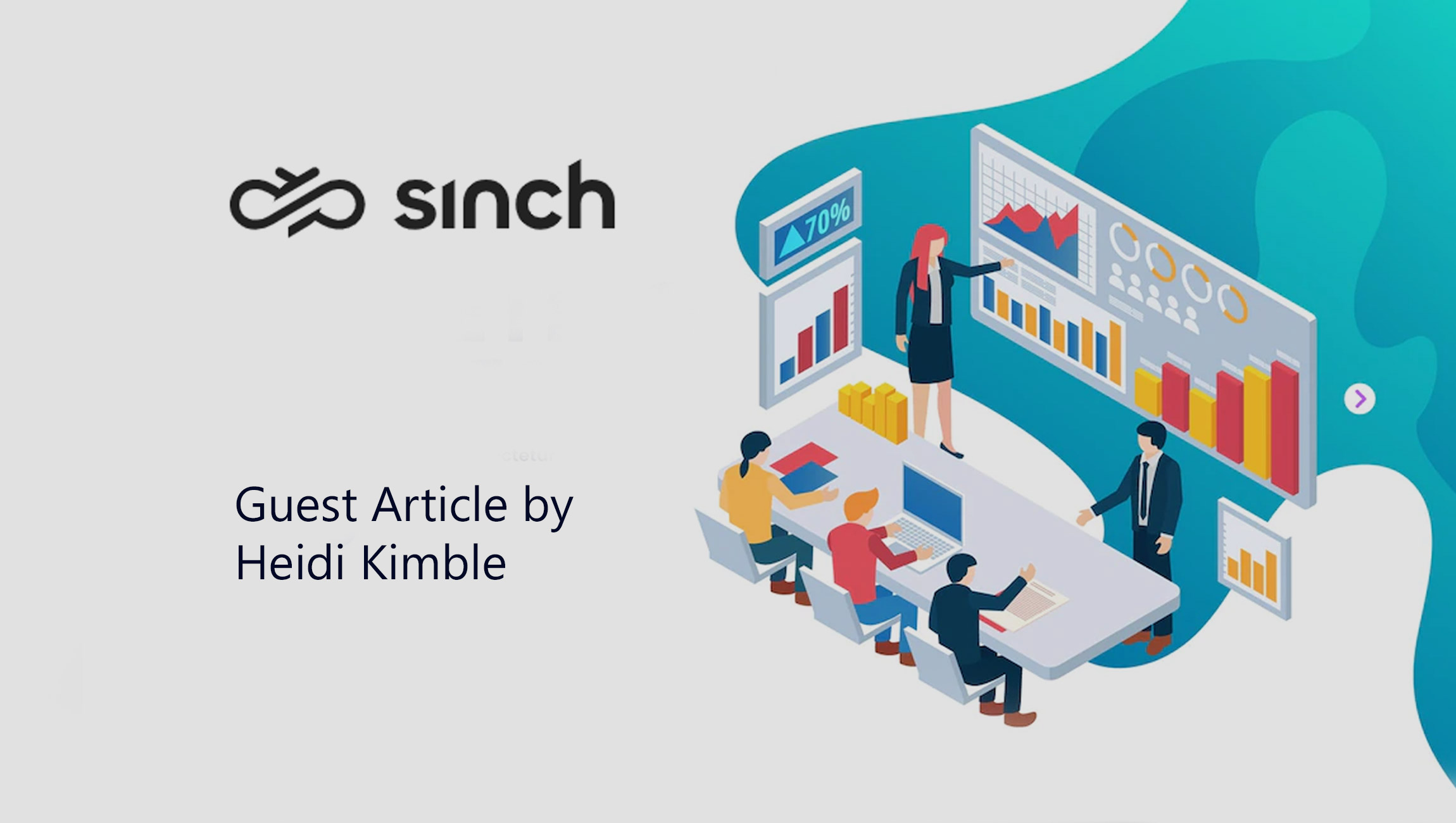Data Science: The Foundation of Any Effective Personalized Marketing Strategy
By: Heidi Kimble, Director of Analytics and Insight at Sinch for Marketing
For today’s marketers, personalization is simultaneously the gold standard and a white whale: there’s a general consensus that it’s worth striving for, because of the enhanced customer engagement and conversion rates that it drives, but marketing teams are often left scratching their heads at exactly how to achieve it. Filling in an email template with a customer’s first name certainly doesn’t cut it anymore — these generic emails can still be valuable to customers if their contents are relevant and delivered at the right time, but if calling your customer by their name is as personal as your message gets, then it may be time to get to know them a little better.
I know what you’re thinking. Heidi, my brand is a little too big to be taking all of our customers out for coffee. Of course it is! And while I’m sure customers would appreciate a free coffee date with their favorite businesses (okay, maybe not), there’s an easier way. Enter: data science. Those two words, data and science, may actually cause some of you to shudder. I’m right-brain-dominant, Heidi. The last time I thought about science was when I was required to take a science class in college. Well, fear not, data science doesn’t have to be that complicated. Here are some ways you and your team can get started on a data science project, and deliver more relevant, personalized communications to your customers.
Marketing Technology News: Decentralized Identity Solutions Are Key To Web3 Advancement
Set your intentions
Often, when people hear “data science,” they jump to complex predictive models, rapid testing platforms, and the like. Yes, once your customer data is in decent shape, there are some fancy AI-powered models that can generate really precise insights, but let’s not get ahead of ourselves. It’s critical to frame any marketing science project with simple questions. These could include: “What time of day/week/month do my customers want to hear from me?” or, “Which messaging channels do my customers use most frequently?” or, “What kind of content is best to deliver to my customers after they’ve made their first purchase?”
With a simple, customer-oriented question at the heart of your data science project, you can extract targeted insights that your team can leverage to enhance marketing personalization efforts. From there, you can chip away at customer friction points bit by bit; once you’ve determined the best channel for reaching a segment of your customers, for example, you can consider timing, content, and so on.
Start simple
Simplicity is a common theme here, and for good reason: if your brand has never utilized data science, starting small will provide you with a foundation on which you can build some more sophisticated models. Once you’ve decided what you want to find out about your customers, start with some simple A/B tests to unlock initial findings.
If you’re wondering which tone of messaging best captures your customers’ attention, create two different options, and send a randomized segment of your customer base the first, and another segment the second option. From there, determine which option resonates more with customers (which drove more clicks? Conversions?), and there’s your winner for this round. Then, run the test again, and again. If a particular version of a message consistently outperforms, or underperforms, the other(s), then your test has taught you something. I should mention here that, in some cases, A/B tests like this will inform you that a particular message, or activity on a particular channel, is outperforming others — but only by a small percentage. Don’t let these small margins fool you: if you have hundreds of thousands of customers, a one percent increase in conversions translates to a significant boost in sales.
As your data matures, level up your testing
At a certain point, your team will have accumulated a considerable amount of data via simple testing. You’ll start to realize that you’re reaching this point when your coworkers have run out of cognitive space to comprehend the next 50 data points about a certain customer segment. Using the data you have, you can implement some more sophisticated strategies to deliver relevant, personalized messages to your customers:
- Lookalike models can tell you which attributes of a customer are highly correlated with desired customer behaviors (i.e. making a purchase or renewing a subscription). You can then tailor your marketing messages to be relevant based on those attributes, and test out different versions of a particular message to see which one sticks.
- Triggers are automated, timed campaigns that align with when a customer is most likely to reach a specific point of the buyer’s journey. In your upfront manual data collection, you may start to see trends in the particular points in time when customers are more likely to convert. Trigger campaigns can leverage AI-powered predictive models to automatically reach customers at these crucial moments, when your marketing messages are most relevant and welcomed.
Marketing Technology News: Three Things to Keep in Mind when it Comes to Marketing Attribution
Above all, I want to stress the importance of putting the customer first — they are the reason you’re even considering a data science project, so use your powers for good. The customer should be central to your personalization efforts; the more value you can provide to them via thoughtful marketing campaigns, the more loyal they will be to your brand. Leverage any data they’ve provided to you voluntarily, as well as their purchase or inquiry history to reach them on the channels they prefer, at the right time, with the right kind of messaging. Data science can help chart a path forward toward the white whale that is personalization.


